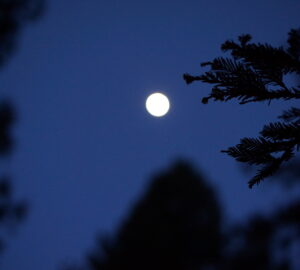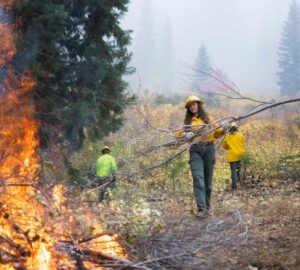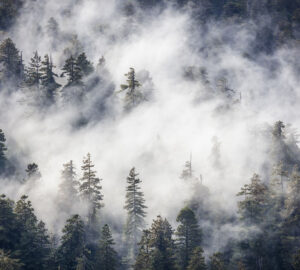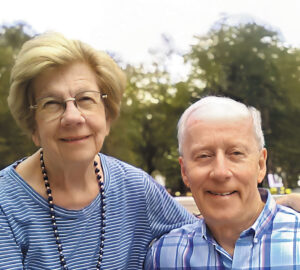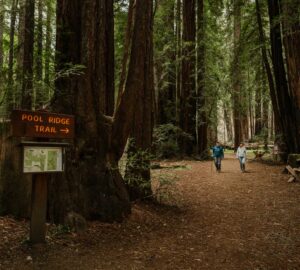First cultural burn on League land revives tribal traditions and forest resilience
Orange flames crackled to life as Tübatulabal Tribal Chairman Robert Gomez bent to light a pile of dry brush. Wisps of smoke drifted upwards, framed by the tawny bark of the giant sequoias standing watch. On this cloudless June day in California’s Sierra Nevada, the Tule River Indian, North Fork Mono, and Tübatulabal Tribes had gathered to lead a small cultural burning demonstration in the Alder Creek Grove. It would be the first-ever cultural burn on land managed by Save the Redwoods League.
California banned cultural burning back in 1850 as part of legislation designed to forcibly remove Indigenous people from their ancestral lands. For millennia, tribes had used fire to help manage the ancient sequoia groves. The practice typically involved lighting small, controlled fires to clear overgrown shrubs, small trees, and dead leaves. These low-intensity fires promoted the growth of plants for food, materials, and medicinal purposes. They also helped manage habitat for wildlife and maintained the health of the giant sequoias, which were adapted to thrive in a fire-prone environment.


Though the positive outcomes may be similar to the impact of prescribed burns, cultural burning is often tied to spiritual beliefs and cultural rituals. “Yes, we’re restoring the landscape and restoring our resources,” said Chairman Ron Goode of the North Fork Mono Tribe. “But when we do that, we’re restoring our culture.”
Cultural burning is also firmly rooted in traditional ecological knowledge—a deep connection to the land, developed over generations. “The cultural burn works because our people have been doing it for centuries and centuries,” said Shine Nieto, vice chairman of the Tule River Indian Tribe. Nieto described the protection of the giant sequoias as a way of life for his people. “Those trees mean a lot to us. They’re actually our ancestors.”
At Alder Creek Grove, tribal leaders generously invited non-Native participants in an effort to share essential ecological knowledge and demonstrate the importance of cultural burning in forests that face existential threats. “Our tribe and our culture, we keep it to ourselves—we don’t usually give it away,” says Nieto. “This is one of the only things we’re giving up, to help save the land.”
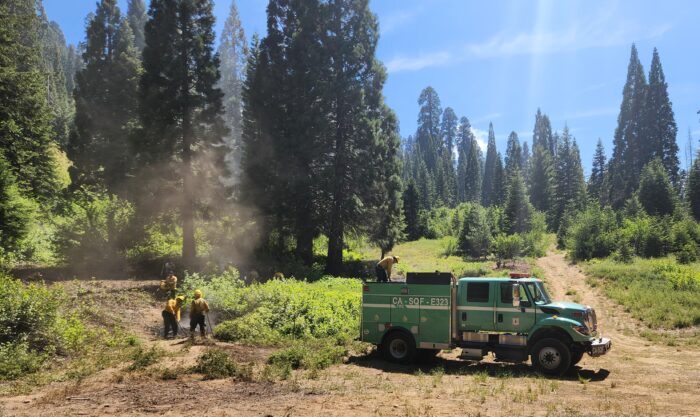

In the past decade, up to 20 percent of the world’s mature giant sequoias died in extreme wildfires, most during the catastrophic fires of 2020 and 2021. These infernos were fueled by an unnatural buildup of dried vegetation, caused by prolonged drought, rising temperatures, and more than a century of fire suppression. The resulting “ladder fuels” caused wildfires to burn at unprecedented intensity and to climb into the canopies of mature sequoias. Ancient trees that had survived for millennia were left as blackened husks, unable to reseed the next generation.
Cultural burns are part of the solution. By reducing fuels, they can positively change the behavior of future wildfires, slowing their spread, lowering their intensity, and reducing smoke. “Beneficial fire has the power to restore balance and resilience to the giant sequoias in an era of climate change,” said Ben Blom, League director of stewardship and restoration. “As we work to undo a century of misguided fire suppression, we fully support our tribal partners in reviving cultural fire on ancestral lands.”

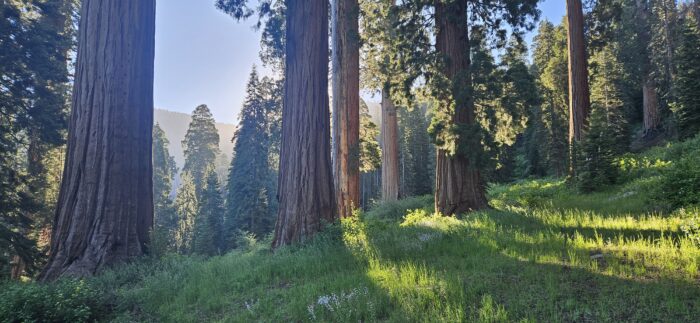
Since the California ban was lifted in 2022, only two off-reservation cultural burns have taken place in the giant sequoia range: The demonstration at Alder Creek Grove and an earlier burn led by the Tule River Indian Tribe on Forest Service land. But the tribes and their partners are hopeful that these first steps will build widespread support for cultural burning. After more than 100 years without this healing practice, the threatened sequoias stand ready.
The demonstration burn at Alder Creek Grove was closely monitored by fire suppression experts and staff from the Tule River Fire Department, Cal Fire, and USDA Forest Service. Funding was provided by the Sierra Nevada Conservancy. Both the Tule River Indian Tribe and Save the Redwoods League are members of the Giant Sequoia Lands Coalition, a multi-partner collaboration dedicated to the preservation and stewardship of giant sequoias.
This feature appears in the beautiful printed edition of Redwoods magazine, a showcase of redwoods conservation stories by leading scientists and writers, as well as breathtaking photos, and ways you can help the forest. Only a selection of these stories are available online.
Join our thousands of members today for only $25, and you’ll get future editions of our Redwoods magazine.

